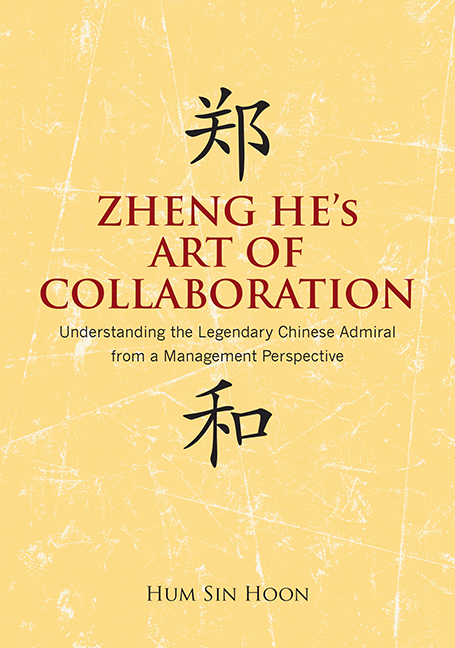 Zheng He's Art of Collaboration
Zheng He's Art of Collaboration Book contents
- Frontmatter
- Contents
- Foreword by Tan Ta Sen
- Message by Wong Ah Long
- Preface
- Acknowledgements
- PART I ZHENG HE AND HIS MESSAGE
- PART II ZHENG HE AND HIS MANAGEMENT
- Chapter 5 Learning from Zheng He
- Chapter 6 Learning from Zheng He
- Chapter 7 Learning from Zheng He
- Chapter 8 Zheng He and His Faith
- Index
- About the Author
Chapter 7 - Learning from Zheng He
Logistics and Supply Chain Management Practices
from PART II - ZHENG HE AND HIS MANAGEMENT
Published online by Cambridge University Press: 21 October 2015
- Frontmatter
- Contents
- Foreword by Tan Ta Sen
- Message by Wong Ah Long
- Preface
- Acknowledgements
- PART I ZHENG HE AND HIS MESSAGE
- PART II ZHENG HE AND HIS MANAGEMENT
- Chapter 5 Learning from Zheng He
- Chapter 6 Learning from Zheng He
- Chapter 7 Learning from Zheng He
- Chapter 8 Zheng He and His Faith
- Index
- About the Author
Summary
INTRODUCTION
From 1405–33, Zheng He led the world's largest ocean-going fleet in seven epic grand voyages to the West. The voyages were epic in terms of their unprecedented fleet and crew sizes, and the long distances travelled; they were grand because of the sheer size of the so-called “treasure” ships.
For every voyage, Zheng He mobilized over 100 (sometimes even more than 300) ships, including approximately 60 large ships to form the main body of the fleet, and over 20,000 crew members. In his maiden voyage, for example, Zheng He had a crew of more than 27,000 men and a fleet of 317 ships. His largest ships measured about 480ft by 194ft while the medium-sized ones measured about 399ft by 162ft. Such vessels were clearly considered colossal, and especially so in the context of the world in the fifteenth century.
Over the seven voyages, Zheng He made calls at more than thirty countries and territories, including present-day Vietnam, Thailand, Pahang, Kelantan, Java, Sumatra, Sri Lanka, India, Dhufar (Arabian Peninsular), Hormuz (Persian Gulf), Yemen, Mecca and Mogadishu in East Africa. These voyages covered a total mileage of over 300,000 kilometres.
In essence, each of Zheng He's grand voyages was a floating fifteenth-century supply chain designed to pick up, store and deliver Chinese products (including the imperial gifts) to the many states and countries that Zheng He would visit and trade with. At the same time, each voyage was also a supply chain of the needed daily provisions of food and water to support the movement and sustenance of Zheng He's massive fleet and crew. Of course, each voyage also served as the supply chain that brought back to China the foreign products picked up through trade, including the tributary gifts for the Ming emperor from the vassal states.
- Type
- Chapter
- Information
- Zheng He's Art of CollaborationUnderstanding the Legendary Chinese Admiral from a Management Perspective, pp. 194 - 247Publisher: ISEAS–Yusof Ishak InstitutePrint publication year: 2011


